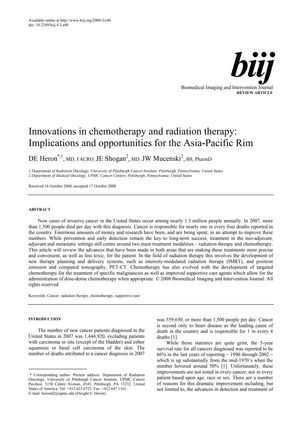Innovations in Chemotherapy and Radiation Therapy: Implications and Opportunities for the Asia-Pacific Rim
July 2008
in “
Biomedical Imaging and Intervention Journal
”

TLDR New cancer treatments are more precise and less toxic, improving survival rates, but Asia faces challenges in adopting these advancements.
In 2008, the document outlined significant progress in chemotherapy and radiation therapy, emphasizing their enhanced precision, convenience, and reduced toxicity. It reported that the United States saw nearly 1.5 million new invasive cancer cases annually, with cancer causing one in four deaths. The 5-year survival rate for all cancers had risen to 66%, up from about 50% in the mid-1970s, thanks to better detection, treatment, and supportive care. Innovations in radiation therapy, such as IMRT and IGRT, were highlighted for enabling more personalized and effective treatment plans. However, the paper also pointed out the challenges in adopting these technologies, including the need for clinical training. It underscored the expected 60% increase in cancer rates in Asia by 2020, advocating for a multidisciplinary approach to cancer care in the region that encompasses education, screening, prevention, and resource investment.